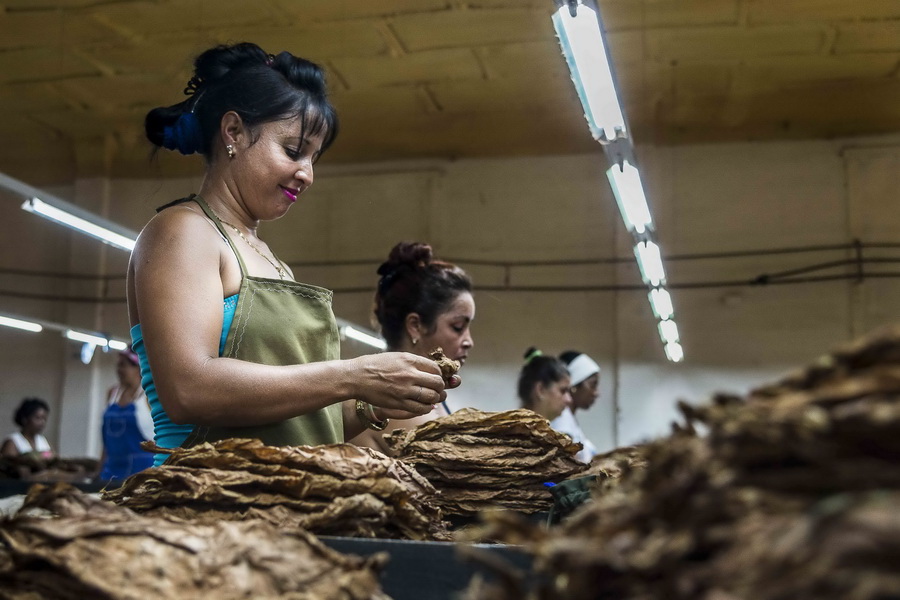Pre-Industry ProcessThis activity or process is aimed at the benefit of the mass of agricultural tobacco obtained at harvest, with the aim of satisfying the request for raw materials of the cigar and tobacco industry, for export and national consumption, from the market demand and taking into account the available raw material hedges.The black tobacco that is grown covered and used to obtain the layer, passes to a chosen one, where it benefits by passing through different processes:1. Fermentation.2. Wetting and airing3. Classification4. Rest and packedFinally, the layer sheets are sent to a warehouse where they are aged in thirds for a minimum time of 6 months.The black sun tobacco, used for filler and capote, receives a first fermentation in the farmer's cure house, then it is sent to a chosen one where it will be benefited through processes of moistening, airing, classified, resting and packed (third) in those that are stored for a period of no less than 6 months.Later the leaves are transferred to a destemmer to continue their benefit and receive a new treatment of:1. Released2. Moistening3. Fermentation before destemming4. Ironing and destemming5. Fermentation after destemming6. Drying7. Packed (bales)At the end of this phase, the tobacco is aged in bales in a warehouse, for a minimum period of 9 months for the lower strength casing leaves and 2 years for the stronger ones.The benefit for blond tobacco.From the controlled cure chamber, it is sent to the chosen one, where it is classified and packed (packaging), then it goes to the Tobacco Drying Plant where it is fragmented, dried and pressed into boxes (packed).

